Tag: digital collections
HathiTrust to the Rescue

“Our shelves are closed, but as long as your screens are open,
you’ll have access to most of our resources.”
UC Berkeley students, faculty, and staff are able to take advantage of HathiTrust’s Emergency Temporary Access Service, which provides access to digital versions of millions of the physical volumes held by libraries across the 10-campus University of California system — plus UC’s two expansive off-site library storage facilities. For Berkeley faculty, students, and staff, this opens up a trove of materials,” said Associate University Librarian Salwa Ismail, who worked with HathiTrust to bring the service to fruition for Berkeley. Access the resources by going to the HathiTrust Digital Library. You can view the materials from anywhere with an internet connection — no VPN or special setup is required. This was first announced publicly via the Library’s news story “Need a book from the UC Berkeley Library while we are sheltering in place? Check here first.” For more information, read HathiTrust’s guide and FAQ.
Five helpful tips:
- Make sure you log in as a “partner institution” with your CalNet ID
- Before searching the catalog, select “full view only” checkbox at the top to retrieve only those works that are eligible for reading
- Click “temporary access” to check out the digitized work for one hour at a time (renewable)
- Only one user may check out a book at a time (or one user per each copy of the book we hold)
- Use the “return early” button to make it available for another user
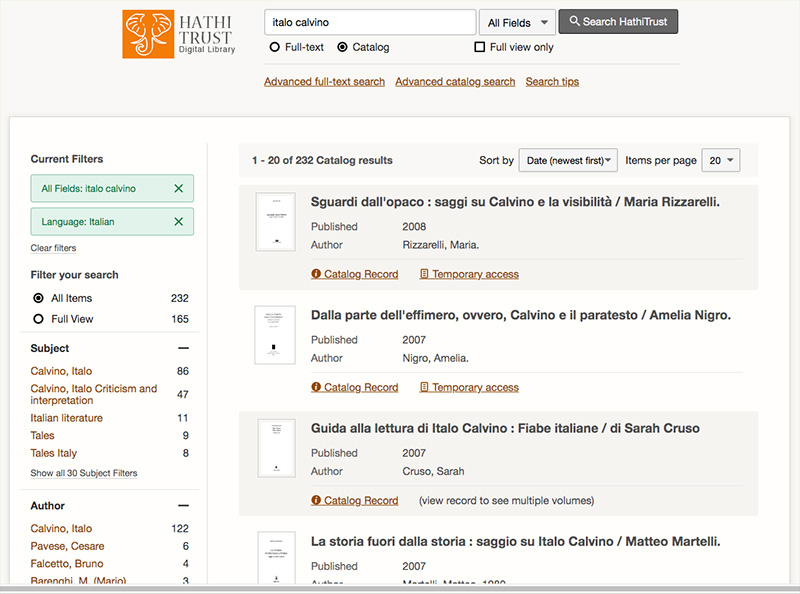
Founded in 2008, HathiTrust is a not-for-profit collaborative of academic and research libraries preserving 17+ million digitized items. HathiTrust offers reading access to the fullest extent allowable by U.S. copyright law, computational access to the entire corpus for scholarly research, and other emerging services based on the combined collection. HathiTrust members steward the collection — the largest set of digitized books managed by academic and research libraries — under the aims of scholarly, not corporate, interests.
See also:
Romance Languages – Online Resources & more
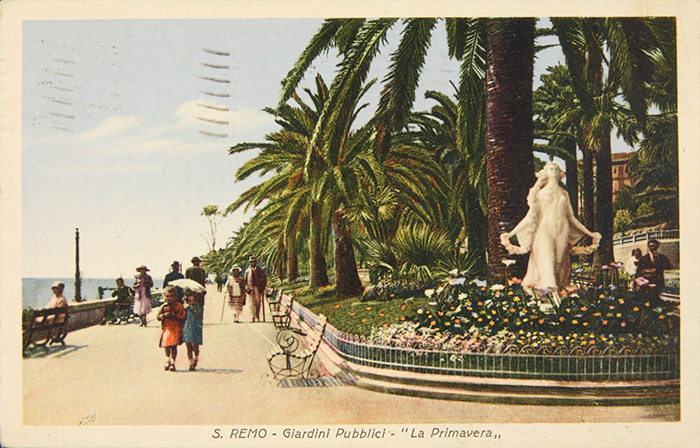
Even though the Library’s buildings have been closed through April 7 due to the coronavirus pandemic, faculty, students and staff can still access a wealth of resources online, and we are ramping up our outreach and remote services. The newly created guide Remote Resources for UC Berkeley Library Users provides an overview of resources available to you:
- Online resources
- Online help 24/7
- Librarian consultations and instruction
- Technology assistance
- Returning and renewing materials (due date for all items due between March 16 and May 31 is now June 1, 2020)
This blog post, which will be updated periodically, aims to highlight online resources for those doing research in the romance languages and literatures within the context of Southern European studies in particular. If you encounter resources of interest not listed please let me know and I’ll add them, especially if they are not included in the directory of library databases or existing library guides for French, Italian and Spanish & Portuguese. See also the e-resources guide for the Caribbean and Latin American Studies.
Book and journal requests are encouraged but the Library is limited to e-formats at this time. And please don’t forget that I remain available for research and reference assistance by email, telephone, chat via Google Hangouts, or Zoom.
Claude Potts
Librarian for Romance Language Collections
Ebooks
Most ebooks in English are acquired through packages with publishers such as Cambridge, JSTOR, Project Muse, ProQuest and are discoverable in OskiCat as well as Start My Search. Here are a few important European ebook platforms that can be explored directly (or individual ebooks encountered through OskiCat):
Cairn ebooks updated 3/26/20
Primarily a journal collection but UCB has has also purchased access to 568 ebooks through Cairn. During the closure, they are providing access to the full catalog of 10,174 ebooks, the Que sais-je? series and also some popular magazines.
Classiques Garnier Numérique
During the COVID-19 crisis, this publisher is generously providing access to digital versions of books we’ve purchased in print, including collections such as Classiques Jaunes, Littérature française, Littératures francophones and more.
Digitalia
Collection of Spanish and Catalan e-books published in Latin America and Spain. To date, the UCB Library has purchased more than 2,700+ titles. To preview the complete list search OskiCat for “Digitalia e-Books UCB access.”
DOAB ![]()
The Directory of Open Access Books is an initiative to increase the discoverability of open access books. Currently, it includes 27,592 academic peer-reviewed books from 377 publishers.
L’Harmathèque
Digital platform for Éditions L’Harmattan which is the largest publisher of French-language ebooks. Search OskiCat for “Harmathèque eBooks” to discover the 1041 titles acquired by the Library.
HathiTrust Emergency Temporary Access Service added 4/3/20 
Current UC Berkeley faculty, staff, and students will be able to take advantage of HathiTrust’s Emergency Temporary Access Service, helping the Library continue to serve its mission even during the COVID-19 pandemic. The service provides view-only access to digital versions of millions of the physical volumes held by libraries across the 10-campus UC system — plus NRLF and SRLF. For more information, read HathiTrust’s guide and FAQ on the Emergency Temporary Access Service.
Humanities E-Book Project (formerly History E-Books Project)
Access to the full text of 5,400 frequently-cited academic books in humanities. (ACLS History E-Books Project – HEB) [1920s – present]
Internet Archive’s National Emergency Library added 3/24/20
A collection of nearly a million and a half digitized books, most still under copyright, in all languages are being made publicly available through June 30, 2020. Up to 10 books at a time can be checked out with the creation of a free account.
OpenEdition Books ![]() updated 3/26/20
updated 3/26/20
A French open access interdisciplinary humanities and social sciences portal with four complementary platforms: OpenEdition Books (ebooks), OpenEdition Journals (scholarly journals), Calenda (academic announcements), and Hypothèses (research blogs). While most of the 9,463 ebooks are available in html, UCB has purchased freemium access to 4,751 ebooks that are now discoverable in OskiCat through the handle “OpenEdition Books.” Purchased titles have been optimized specifically for e-readers, tablets, and smart phones (ePub, PDF, etc.). 700 new titles were recently purchased and freemium access should be turned on by April however during the period of confinement, most books will be available in all formats.
REDIB (Red Iberoamericana de Innovación y Conocimiento Científico) ![]()
A platform for the aggregation of open scientific and academic content in the electronic format produced in the Ibero-American context. Currently 3,199 journals and 852 ebooks.
Torrossa
Casalini Libri’s full text digital platform provides access to 3,161 ebooks, 530 conference proceedings, and 141 journals by major Italian publishers.
Journals
Cairn
The most comprehensive collection of French-language journals in the humanities and social sciences available online. Full text to more than 500 peer-reviewed academic French and Belgian journals, as well as citations for open-access journals, in the humanities and social sciences. [2001 – present]
Dialnet ![]()
Indexes articles, conference papers, book chapters, dissertations and other documents in the social sciences and the humanities published mostly in Spain and to a lesser extent in Latin America. Full text provided to open access content. [2001 – present]
Fabrizio Serra Journals
Collection of more than 50 Italian scholarly journals primarily covering literature, literary criticism, philology, and linguistics. [start dates vary by title; most begin in 2000].
OpenEdition Journals ![]()
Formerly Revues.org is part of OpenEdition, a comprehensive digital publishing infrastructure whose objective is to promote research in the humanities and social sciences. The open access scholarly journal collection includes 534 mostly French but also English, Italian and Spanish titles in the humanities and social sciences. [1999-]
Persée ![]()
Free and open access to French scholarly journals in the sciences, social sciences, and humanities as well as to books, conference proceedings, serial publications, primary sources, etc.
RACO: Revistes Catalanes amb Acces Obert ![]() added 3/24/20
added 3/24/20
A cooperative open access repository of 506 full text scholarly journals.
REDIB (Red Iberoamericana de Innovación y Conocimiento Científico) ![]()
A platform for the aggregation of scientific and academic content in the electronic format produced in the Ibero-American context. Currently 3199 journals and 433 ebooks published by CSIC.
Torrossa
Casalini Libri’s full text digital platform provides access to 3161 ebooks, 530 conference proceedings, and 141 journals by major Italian publishers including Fabrizio Serra Editore.
Digital libraries and other online collections
- Biblioteca Digital Hispánica (BNE)
- Biblioteca Nacional de Portugal (BN)
- Biblioteca de Catalunya
- DART-Europe E-theses Portal
- e-Helvetica (Swiss National Library)
- Center for Research Libraries (CRL)
- Europeana
- Gallica (BnF)
- HathiTrust Digital Library
- Internet Culturale (Biblioteca digitale italiana)
Database Trials
RetroNews added 4/15/20
The UC Berkeley academic community will have access to a 60-day trial of RetroNews. While much of this historical French language news collection is freely available through Gallica, the advanced functionality and added content is only available to subscribers. The collection features over 600 newspapers, journals, magazines and reviews, published between 1631 and 1950: the most important titles of the daily press (Le Petit Parisien, Le Journal, Le Matin) but also periodicals of the political spectrum, regional publications and satirical magazines. Every day, articles, documentary series, video and audio content retrace historic events and their reception by the contemporary press.
Resource: UC Berkeley Library’s Digital Collections
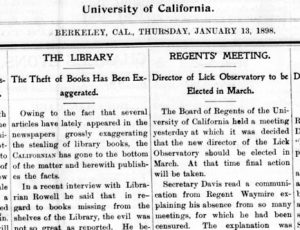 The Library has launched a platform for its growing collection of digitized materials. It currently includes more than 92,000 items from more than 200 collections that are available to be viewed at any time, from anywhere. Read more about the project in this Daily Cal article.
The Library has launched a platform for its growing collection of digitized materials. It currently includes more than 92,000 items from more than 200 collections that are available to be viewed at any time, from anywhere. Read more about the project in this Daily Cal article.
New Resources: Additional Drama Online Modules

The UC Berkeley community now has access to new content through our subscription to Drama Online. Drama Online is an online resource of primary and secondary sources for the study and performance of drama. It contains 1700 playtexts, 350 audio performances, and 150 hours of video. The new resources include:
- Shakespeare’s Globe on Screen (2016-2018): Shakespeare’s Globe on Screen 2 (2016-2018) is composed of streaming productions from the theatre’s 2016, 2017 and 2018 seasons.
- The Royal Shakespeare Company Live Collection: Recordings of live screenings of 12 productions from the Royal Shakespeare Company in Stratford-upon-Avon.
- Shakespeare’s Heroes & Villains: A 1.5 hour streaming production featuring actor Steven Berkoff’s mediations on and performances of excerpts from Shakespeare’s heroes and villains.
- Critical Studies & Performance Practice
- Aurora Metro Books
- Playwrights Canada Press
- Physical Actor Training (PATAZ) Videos
This strengthens existing content in Drama Online, including:
- 1,100+ playtexts from Methuen Drama, Faber and Faber, and Arden Shakespeare, as well as contextual and critical background through scholarly works and practical guides.
- Shakespeare’s Globe on Screen 1
- Early modern drama titles staged and filmed specifically for educational use (Doctor Faustus, The Duchess of Malfi, Volpone and School for Scandal).
- BBC Drama Films
For more of recent library acquisitions, see our posts on Underground and Independent Comic, Comix, and Graphic Novels and OverDrive.
Resource: ASEAN Digital Library
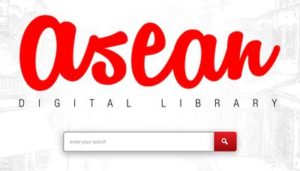 ASEAN Digital Library serves as a portal to the digitized resources of National Libraries in the ASEAN region. It includes books, papers and manuscripts, maps, photographs, artworks, audio and video recordings, ephemera, and newspapers that focus on the ASEAN region. Currently, the participants are the National Libraries of Brunei, Cambodia, Indonesia, Laos, Malaysia, Myanmar, Philippines, Singapore, Thailand, and Vietnam.
ASEAN Digital Library serves as a portal to the digitized resources of National Libraries in the ASEAN region. It includes books, papers and manuscripts, maps, photographs, artworks, audio and video recordings, ephemera, and newspapers that focus on the ASEAN region. Currently, the participants are the National Libraries of Brunei, Cambodia, Indonesia, Laos, Malaysia, Myanmar, Philippines, Singapore, Thailand, and Vietnam.
Keyword searches in the resource can be filtered by country, type, and language. It is also possible to browse the content by country.
Joventut: periódich catalanista: literatura, arts, ciencias
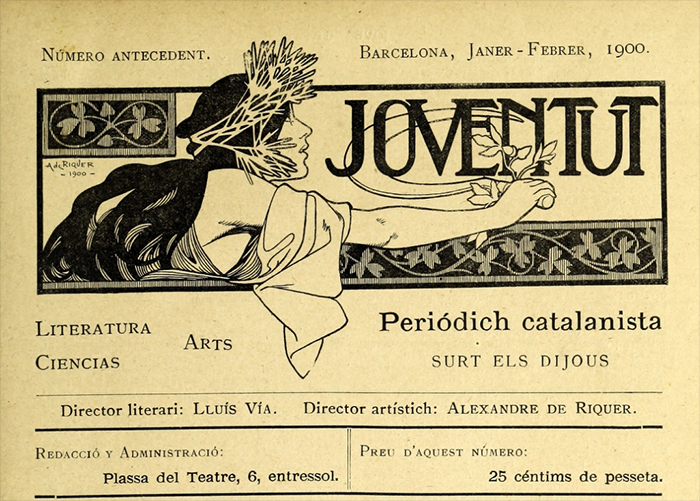
Few books and journals in the Library stay in the same place forever. Berkeley’s copy of the renowned Art Nouveau periodical, Joventut published between 1900 and 1906 and directed by Alexandre de Riquer and Lluís Vía under the auspices of the “Unio Catalanista” has recently migrated from the Art History/Classics Library to The Bancroft Library for safekeeping. Antiquarian bookdealer Peter Bernett describes the journal as “a major forum for the presentation and reviews of ‘modernista’ literature, criticism, theater, music, and visual art in Barcelona and greater Catalonia, as well as discussing current aesthetic trends in Europe.” An extension of the Renaixença cultural and literary movement with inspiration from the Pre-Raphaelites, it featured cutting edge art, architecture and literature. In its first year of publication it was the first review to reproduce a work by Picasso. The ornamental golden binding was inspired by Aubrey Beardsley’s The Yellow Book. Catalan poets, novelists and playwrights such as Jacint Verdaguer, Joaquim Ruyra, and Victor Català — who will soon be featured in The Languages of Berkeley online exhibition —were among the regular contributors.
Joventut has been digitized separately by the Biblioteca de Catalunya and the Getty Research Institute, available through the HathiTrust Digital Library and The Internet Archive.

New Project Release: Marion and Herb Sandler Oral History Project
New Project Release: Marion and Herb Sandler Oral History Project
Herb Sandler and Marion Osher Sandler formed one of the most remarkable partnerships in the histories of American business and philanthropy—and, if their friends and associates would have a say in things, in the living memory of marriage writ large. This oral history project documents the lives of Herb and Marion Sandler through their shared pursuits in raising a family, serving as co-CEOs for the savings and loan Golden West Financial, and establishing a remarkably influential philanthropy in the Sandler Foundation. This project consists of eighteen unique oral history interviews, at the center of which is a 24-hour life history interview with Herb Sandler.
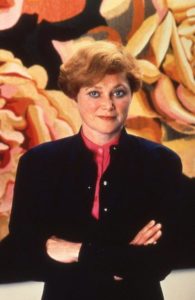
Marion Osher Sandler was born October 17, 1930, in Biddeford, Maine, to Samuel and Leah Osher. She was the youngest of five children; all of her siblings were brothers and all went on to distinguished careers in medicine and business. She attended Wellesley as an undergraduate where she was elected into Phi Beta Kappa. Her first postgraduate job was as an assistant buyer with Bloomingdale’s in Manhattan, but she left in pursuit of more lofty goals. She took a job on Wall Street, in the process becoming only the second woman on Wall Street to hold a non-clerical position. She started with Dominick & Dominick in its executive training program and then moved to Oppenheimer and Company where she worked as a highly respected analyst. While building an impressive career on Wall Street, she earned her MBA at New York University.
Herb Sandler was born on November 16, 1931 in New York City. He was the second of two children and remained very close to his brother, Leonard, throughout his life. He grew up in subsidized housing in Manhattan’s Lower East Side neighborhood of Two Bridges. Both his father and brother were attorneys (and both were judges too), so after graduating from City College, he went for his law degree at Columbia. He practiced law both in private practice and for the Waterfront Commission of New York Harbor where he worked on organized crime cases. While still living with his parents at Knickerbocker Village, he engaged in community development work with the local settlement house network, Two Bridges Neighborhood Council. At Two Bridges he was exposed to the work of Episcopal Bishop Bill Wendt, who inspired his burgeoning commitment to social justice.
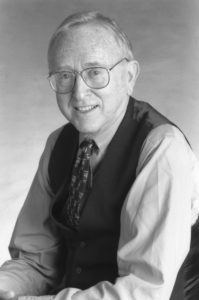
Given their long and successful careers in business, philanthropy, and marriage, Herb and Marion’s story of how they met has taken on somewhat mythic proportions. Many people interviewed for this project tell the story. Even if the facts don’t all align in these stories, one central feature is shared by all: Marion was a force of nature, self-confident, smart, and, in Herb’s words, “sweet, without pretentions.” Herb, however, always thought of himself as unremarkable, just one of the guys. So when he first met Marion, he wasn’t prepared for this special woman to be actually interested in dating him. The courtship happened reasonably quickly despite some personal issues that needed to be addressed (which Herb discusses in his interview) and introducing one another to their respective families (but, as Herb notes, not to seek approval!).
Within a few years of marriage, Marion was bumping up against the glass ceiling on Wall Street, recognizing that she would not be making partner status any time soon. While working as an analyst, however, she learned that great opportunity for profit existed in the savings and loan sector, which was filled with bloat and inefficiency as well as lack of financial sophistication and incompetence among the executives. They decided to find an investment opportunity in California and, with the help of Marion’s brothers (especially Barney Osher), purchased a tiny two-branch thrift in Oakland, California: Golden West Savings and Loan.
Golden West—which later operated under the retail brand of World Savings—grew by leaps and bounds, in part through acquisition of many regional thrifts and in part through astute research leading to organic expansion into new geographic areas. The remarkable history of Golden West is revealed in great detail in many of the interviews in this project, but most particularly in the interviews with Herb Sandler, Steve Daetz, Russ Kettell, and Mike Roster, all of whom worked at the institution. The savings and loan was marked by key attributes during the forty-three years in which it was run by the Sandlers. Perhaps most important among these is the fact that over that period of time the company was profitable all but two years. This is even more remarkable when considering just how volatile banking was in that era, for there were liquidity crises, deregulation schemes, skyrocketing interest rates, financial recessions, housing recessions, and the savings and loan crisis of the 1980s, in which the entire sector was nearly obliterated through risky or foolish decisions made by Congress, regulators, and managements. Through all of this, however, Golden West delivered consistent returns to their investors. Indeed, the average annual growth in earnings per share over 40 years was 19 percent, a figure that made Golden West second only to Warren Buffett’s Berkshire Hathaway, and the second best record in American corporate history.
Golden West is also remembered for making loans to communities that had been subject to racially and economically restrictive redlining practices. Thus, the Sandlers played a role in opening up the dream of home ownership to more Americans. In the offices too, Herb and Marion made a point of opening positions to women, such as branch manager and loan officer, previously held only by men. And, by the mid-1990s, Golden West began appointing more women and people of color to its board of directors, which already was presided over by Marion Sandler, one of the longest-serving female CEOs of a major company in American history. The Sandlers sold Golden West to Wachovia in 2006. The interviews tell the story of the sale, but at least one major reason for the decision was the fact that the Sandlers were spending a greater percentage of their time in philanthropic work.
One of the first real forays by the Sandlers into philanthropic work came in the wake of the passing of Herb’s brother Leonard in 1988. Herb recalls his brother with great respect and fondness and the historical record shows him to be a just and principled attorney and jurist. Leonard was dedicated to human rights, so after his passing, the Sandlers created a fellowship in his honor at Human Rights Watch. After this, the Sandlers giving grew rapidly in their areas of greatest interest: human rights, civil rights, and medical research. They stepped up to become major donors to Human Rights Watch and, after the arrival of Anthony Romero in 2001, to the American Civil Liberties Union.
The Sandlers’ sponsorship of medical research demonstrates their unique, creative, entrepreneurial, and sometimes controversial approach to philanthropic work. With the American Asthma Foundation, which they founded, the goal was to disrupt existing research patterns and to interest scientists beyond the narrow confines of pulmonology to investigate the disease and to produce new basic research about it. Check out the interview with Bill Seaman for more on this initiative. The Program for Breakthrough Biomedical Research at the University of California, San Francisco likewise seeks out highly-qualified researchers who are willing to engage in high-risk research projects. The interview with program director Keith Yamamoto highlights the impacts and the future promise of the research supported by the Sandlers. The Sandler Fellows program at UCSF selects recent graduate school graduates of unusual promise and provides them with a great deal of independence to pursue their own research agenda, rather than serve as assistants in established labs. Joe DeRisi was one of the first Sandler Fellows and, in his interview, he describes the remarkable work he has accomplished while at UCSF as a fellow and, now, as faculty member who heads his own esteemed lab.
The list of projects, programs, and agencies either supported or started by the Sandlers runs too long to list here, but at least two are worth mentioning for these endeavors have produced impacts wide and far: the Center for American Progress and ProPublica. The Center for American Progress had its origins in Herb Sandler’s recognition that there was a need for a liberal policy think tank that could compete in the marketplace of ideas with groups such as the conservative Heritage Foundation and the American Enterprise Institute. The Sandlers researched existing groups and met with many well-connected and highly capable individuals until they forged a partnership with John Podesta, who had served as chief of staff under President Bill Clinton. The Center for American Progress has since grown by leaps and bounds and is now recognized for being just what it set out to be.
The same is also true with ProPublica. The Sandlers had noticed the decline of traditional print journalism in the wake of the internet and lamented what this meant for the state of investigative journalism, which typically requires a meaningful investment of time and money. After spending much time doing due diligence—another Sandler hallmark—and meeting with key players, including Paul Steiger of the Wall Street Journal, they took the leap and established a not-for-profit investigative journalism outfit, which they named ProPublica. ProPublica not only has won several Pulitzer Prizes, it has played a critical role in supporting our democratic institutions by holding leaders accountable to the public. Moreover, the Sandler Foundation is now a minority sponsor of the work of ProPublica, meaning that others have recognized the value of this organization and stepped forward to ensure its continued success. Herb Sandler’s interview as well as several other interviews describe many of the other initiatives created and/or supported by the foundation, including: the Center for Responsible Lending, Oceana, Center on Budget and Policy Priorities, Learning Policy Institute, and more.
Herb and Marion Sandler also played key roles in the formation and funding of two important research centers here on the UC Berkeley campus which have a global reach: the Berkeley Center for Equitable Growth (CEG) and the Human Rights Center. The CEG is directed by economist Emmanual Saez and has supported the influential work of Thomas Piketty which looks at methods for reducing wealth and income disparities around the globe. The Human Rights Center has for the past 25 years investigated and shed light upon human rights abuses around the globe.
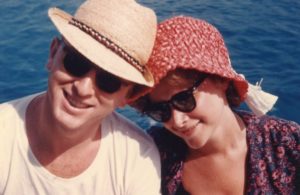
A few interviewees shared the idea that when it comes to Herb and Marion Sandler there are actually three people involved: Marion Sandler, Herb Sandler, and “Herb and Marion.” The later creation is a kind of mind-meld between the two which was capable of expressing opinions, making decisions, and forging a united front in the ambitious projects that they accomplished. I think this makes great sense because I find it difficult to fathom that two individuals alone could do what they did. Because Marion Sandler passed away in 2012, I was not able to interview her, but I am confident in my belief that a very large part of her survives in Herb’s love of “Herb and Marion,” which he summons when it is time to make important decisions. And let us not forget that in the midst of all of this work they raised two accomplished children, each of whom make important contributions to the foundation and beyond. Moreover, the Sandlers have developed many meaningful friendships (see the interviews with Tom Laqueur and Ronnie Caplane), some of which have spanned the decades.
The eighteen interviews of the Herb and Marion Sandler oral history project, then, are several projects in one. It is a personal, life history of a remarkable woman and her mate and life partner; it is a substantive history of banking and of the fate of the savings and loan institution in the United States; and it is an examination of the current world of high-stakes philanthropy in our country at a time when the desire to do good has never been more needed and the importance of doing that job skillfully never more necessary.
Martin Meeker, Charles B. Faulhaber Director, Oral History Center, UC Berkeley
List of Interviews of the Marion and Herbert Sandler Oral History Project
Ronnie Caplane, “Ronnie Caplane: On Friendship with Marion and Herb.”
Joseph DeRisi, “Joe DeRisi: From Sandler Fellow to UCSF Professor of Biochemistry.”
Stephen Hauser, “Stephen Hauser: Establishing the Sandler Neurosciences Center at UCSF.”
Russell Kettell, “Russ Kettell: A Career with Golden West Financial.”
Thomas Laqueur, “Tom Laqueur: On the Meaning of Friendship.”
Bernard Osher, “Barney Osher: On Marion Osher Sandler.”
Michael Roster, “Michael Roster: Attorney and Golden West Financial General Counsel.”
Kenneth Roth, “Kenneth Roth: Human Rights Watch and Achieving Global Impact.”
Herbert Sandler, “Herbert Sandler: A Life with Marion Osher Sandler in Business and Philanthropy.”
James Sandler, “Jim Sandler: Commitment to the Environment in the Sandler Foundation.”
Susan Sandler, “Susan Sandler: The Sandler Family and Philanthropy.”
William Seaman, “Bill Seaman: The American Asthma Foundation.”
Paul Steiger, “Paul Steiger: Business Reporting and the Creation of ProPublica.”
Richard Tofel, “Richard Tofel: The Creation and Expansion of ProPublica.”
New Portal for Digital Collections of UC Berkeley’s Japanese Special Collections
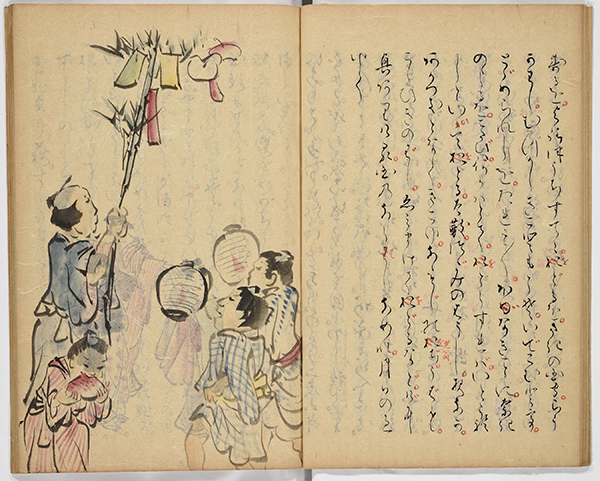
Tsuchiya, Ayako 土屋斐子 b. 1759 . Izumi nikki 和泉日記 [Diary in Izumi Province].
Hand-written manuscript, after 1809. From Japanese Manuscripts Collection.
Since 2006, the Art Research Center, Ritsumeikan University (Kyoto, Japan) and the C. V. Starr East Asian Library have been engaged in collaboration to digitize parts of the Library’s Japanese special collections. Today we are pleased to introduce a portal website for these digital collections, which provides free access to digital surrogates of the following UC Berkeley’s rare and historical sources related to Japan for research, teaching, and exploration. In addition, the portal also provides access to digital images provided by other research institutions (see Berkeley Joint Project, Rare Book Database, which includes over 90,000 titles of Japanese rare books).
Old and Rare Books 古典籍: A small selection from the Library’s Edo printed books and manuscripts collections, mostly from the Mitsui collection acquired in 1950. The collection includes the links to digital images of 760 titles in the Database of Pre-Modern Japanese Works provided by the National Institute’s Japanese Literature.
Copperplate Prints 銅版画: Consists of ca. 2,400 individual prints produced in Japan between 1855 and 1920, distributed in various formats. The collection originally owned by Mitsui Takakata (1867-1945).
Sugoroku Sheets 双六: Consists of ca. 150 sugoroku sheets produced in Japan in the Edo through the Taisho periods. The collection originally owned by Mitsui Takakata (1867-1945).
Fine Art Auction Catalogs 美術品入札目録: A small selection from the Library’s art auction catalog collection printed during the Meiji through the Showa periods, mostly from the Mitsui collection.
To browse all the digital surrogates, click “search” or “検索” button in any of the above mentioned databases. New materials are added periodically.
For any questions, contact Toshie Marra at tmarra@library.berkeley.edu.
Workshop: Omeka for Digital Collections and Exhibits
Omeka for Digital Collections and Exhibits
Thursday, April 12th, 4:10-5:00pm
D-Lab, 350 Barrows Hall
Omeka is ideal for creating and displaying an online collection or exhibit composed of many digital items. If you have a bunch of digital images, scans, and files around a certain theme or project, and you would like to organize, describe, and showcase these files, Omeka may be a good fit for you. In this hands-on workshop, we will learn how to add and describe items in Omeka, the basics of the Dublin Core metadata schema, and how to create webpages with the Simple Pages plugin. Register at bit.ly/dp-berk
Upcoming Workshops in this Series 2017-2018:
- By Design: Graphics & Images Basics
- The Long Haul: Best Practices for Making Your Digital Project Last
Please see bit.ly/dp-berk for details.
In Memory of Ruth Bancroft 9/2/1908 – 11/26/2017

UC Berkeley alumna Ruth Petersson Bancroft, founder of The Ruth Bancroft Garden in Walnut Creek and well-known expert in dry gardening, passed away at the age of 109 on Nov. 26. Her oral history, The Ruth Bancroft Garden in Walnut Creek, California: Creation in 1971 and Conservation, conducted in 1991 and 1992, is described by interviewer Suzanne B. Riess as “…the amazing chronicle of the growth of a passionate gardener, from her childhood recollections of spring wildflowers on the hills of an earlier, bucolic Berkeley, to her current triumphs, and the tribulations of stewardship of a garden more or less in the public trust.”
The daughter of first-generation Swedish immigrants, Ruth Petersson was born in Massachusetts, but moved to Berkeley, California when her father landed a professorship at UC Berkeley. Of her childhood, she said, “I spent a lot of time wandering around and also over into Wildcat Canyon, just looking at the wildflowers and I think that’s what started me in the interest of wildflowers…” Although Ruth originally studied architecture as one of the only women in the program at UC Berkeley, the Great Depression hit and so for the sake of job security, she switched her career to education. It was during her time as a teacher of home economics in Merced that she met Philip Bancroft, Jr., the grandson of Hubert Howe Bancroft, whose 60,000-volume book collection began the Bancroft Library. After they married, the couple moved onto the Bancroft Farm in the East Bay. The Bancroft family sold much of their land to the city of Walnut Creek as it expanded over the years. Later, in 1971, Philip Bancroft, Jr. gave the last 3-acre plot of walnut orchards to his wife in order to house her extensive collection of succulents.
Though The Ruth Bancroft Garden now boasts a beautiful display of water-conserving plants, the garden was not without its hardships at the beginning. Just a few months after Bancroft began her garden, a severe freeze in December killed nearly all that she had planted. Still, she persevered. “Well, I started again the next year… I figured it doesn’t happen that often, and you can’t just not replant those same things, because they might have another twenty years before they’d be killed again. So I’m just replanting. Have to start over again.” To this, Riess queried, “You didn’t think in some way you had been given a message?” Bancroft laughed and replied, “No.”
A long-time friend of Bancroft and former manager at the UC Berkeley Botanical Garden, Wayne Roderick said, “I would classify Ruth as a genuine dirt gardener. She’s out there doing things with her bare hands. She would be out in the garden by seven at the latest, and for the first hour she was weeding the path of the little spotted spurge, hand-weeding those paths until her knees would get so sore from the rocks, the gravel. That’s what I mean by a genuine dirt gardener.” In addition to Bancroft’s hands-on style of working, she also kept meticulous records as she created her garden. An invaluable addition to her oral history is the transcription of the entirety of her handwritten notes on the garden’s first year, cataloguing every trial and triumph. Riess urges in her introduction to the oral history, “Any gardener will do well to read that year of Ruth’s journal, to see the value of a journal, as well as the work involved in realizing a dream, and the necessity of being willing to weed!”
Over the years, Bancroft also had many helpers that contributed to the development of her impressive creation, such as Lester Hawkins, who created the original design of the garden, and her husband Philip. Roderick recalls, “Phil Bancroft just adored Ruth, and he wanted her to have anything she wanted. He did everything he could to help her. I don’t think Phil thought about the garden continuing, but he certainly was there to make sure she got what she wanted for the place. He was a farmer-type, but he enjoyed seeing the garden, and he was willing to get in and help.” Later, her garden would inspire fellow gardener Francis Cabot to create the Garden Conservancy, of which the Ruth Bancroft Garden became the first of many private gardens to be preserved for the public.
Still, through all of the international recognition and acclaim she received, Bancroft maintained a simple and genuine love for gardening: “You never know just what’s going to bloom when, during the summer. And a lot of the bloom just lasts a day, or possibly two days. It’s interesting to see what there is, and catch it before it’s gone.” When asked whether she had had a mission for the garden, she replied, “I just started it for the fun of it, and the enjoyment of it. I had no idea that people would be looking at it, no idea at all.“
Maggie Deng
Oral History Center Student Assistant
